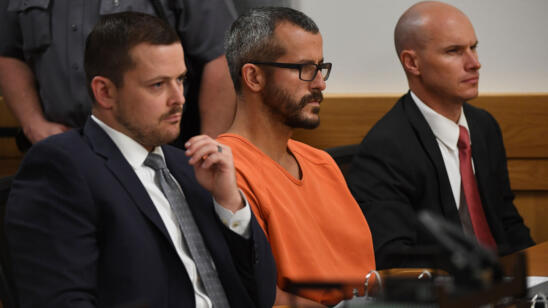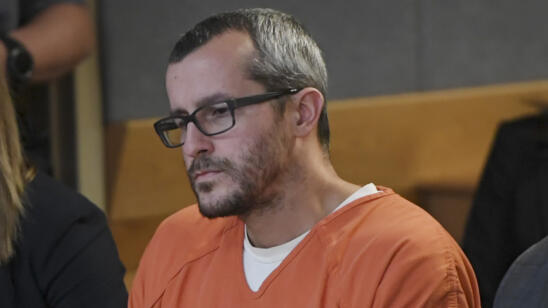When Colorado native Christopher Watts first confessed to killing his pregnant wife, Shannan, he told investigators that he did so in a “rage.” According to Watts’ August 2018 affidavit, he and his wife Shanann had been discussing a divorce, a fraught conversation that left both in tears. Watts claimed that Shanann then fatally attacked their two daughters, at which point he attacked her. In the end, everyone but Watts was dead. He then dumped the bodies in oil tanks at a remote site where he worked.
Watts was lying—he had killed all three of them, he later confessed. But he was also lying about the fit of rage. He’d been carefully formulating the attacks.
Lena Derhally, a psychotherapist and author who wrote a book about Chris Watts entitled My Daddy is a Hero, says that Watts had been planning his attack for weeks.
“The hard evidence we have backs it up,” Derhally tells A&E Real Crime. “You just look at his text messages with his wife, with [his mistress] Nikki [Kessinger]… he called a co-worker the day before the murders and told the co-worker, ‘I’m going to go out to this remote site by myself.'”
Premeditated familicide is harder to fathom than a spontaneous fit of rage. Family annihilation—wherein men kill their wives and children (and, more often than not, themselves)—is so grotesque and contrary to basic ideas people have about family that it feels like it should only happen when a person is blinded by anger.
How Watts’ Case is Typical of Family Annihilators
And yet there’s ample evidence to suggest that many family annihilators do plan out the mass murder of those closest to them. A 2013 British study of such killers found that acts of mass familicide often take place in August—when summer vacations give fathers more access to their children. Another study found that more than 40 percent of homicide/suicides involving child victims include some form of premeditation: a note, or an explicit expression of homicidal or suicidal intent.
In Watts’ case, he later confessed to investigators that he fabricated the story of Shanann’s attacks on his daughters—and that he killed them himself. In a letter he sent from prison, he alluded to the premeditation, writing, “I wish I could’ve had an open ear to hear the Lord calling me back in June/July/August,” adding that “August 12th, when I finished putting the girls to bed, I walked away and said, ‘That’s the last time I’m going to be tucking my babies in.'”
[Watch Beyond the Headlines: The Watts Family Tragedy on A&E Crime Central.]
Watts killed his two daughters—4-year-old Bella and 3-year-old Celeste—alongside their mother in the early morning hours of August 13, 2018.
Family annihilation cuts against a lot of demographic trends in American violent crime. Perpetrators tend to be white men in their 30s, with no criminal background. All of this also applied to Chris Watts.
How Chris Watts’ Case Breaks the Family Annihilator Pattern
Jacquelyn Campbell, a professor at Johns Hopkins University School of Nursing who specializes in intimate partner violence, says just because there’s no criminal background doesn’t mean there are no warning signs.
Campbell’s research into intimate partner homicide suggests that even though perpetrators often have records free of domestic violence, there’s darkness below the surface. Follow-up interviews with friends and family suggest the violence was there—it just went unreported to the police.
“It may well have been because she was so scared of him that she never called the police,” she tells A&E True Crime.
Derhally agrees, but notes that Watts seemed to truly lack the aggressive streak that family annihilators might otherwise have—even behind closed doors.
“How does someone who has no warning signs and seems like a docile, submissive, passive, easygoing guy—and he didn’t have a psychotic break, either… kill his family? People are trying to wrap their heads around it.”
Derhally adds that research indicates most family annihilators are motivated by one of four factors: a sudden loss of access to their children; financial stress, and shame surrounding financial failure; a belief that they’re committing “mercy killings” of their family members; or being inspired to kill by some psychotic hallucination or delusion. By all accounts, Watts’ case didn’t fit any of that.
Rather, his case seemed to be motivated by a desire to rid himself of his family and spend time with his mistress.
Campbell says that familicide is often preceded by a wife-initiated break-up and an unsuccessful attempt on the part of the husband to reconcile. When that fails, explosive violence can follow.
“We health care providers need to recognize this period immediately after she leaves—the next weeks or months—as a highly volatile time. And that he may go to a health care provider and say ‘I’m really upset’…and his distress is recognized, but not the homicidal potential.”
There’s also frequently suicide involved in family annihilation—that is, the majority of men who kill their families take their own lives as well.
In a study she conducted , Campbell says most family annihilators threaten to kill themselves before eventually killing all their family members.
“Often times, that threat was: ‘I’m going to kill myself if you ever leave me.’ Or, ‘I’m going to kill myself if you ever try to get custody of the kids.'”
Chris Watts has never exhibited that kind of suicidality, says Derhally. “And he’s shown absolutely no remorse.”
Related Features:
What’s Chris Watts’ Life in Prison Like?
Chris Watts Murder Case: The Most Disturbing Revelations from the Prosecution’s Discovery Files
The Disturbing Reasons Why Some Men Kill Their Families
The Twisted Reasons Why Some Husbands Kill Their Wives
Chris Watts, David Berkowitz and Other Infamous Killers Who Found God in Prison


